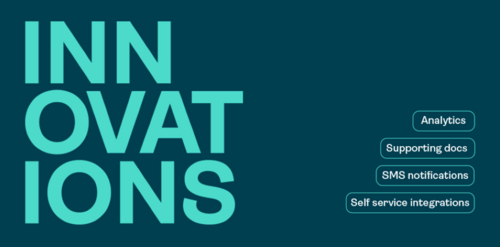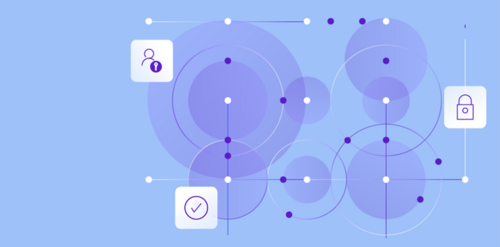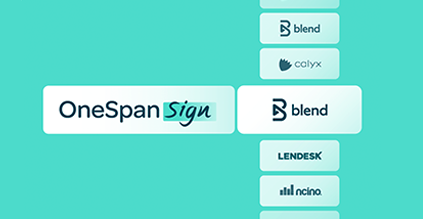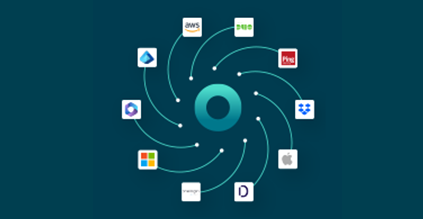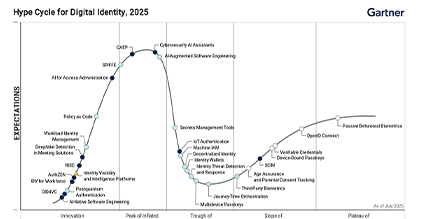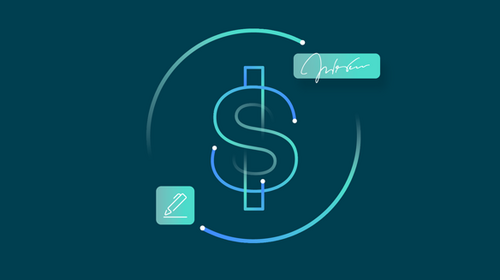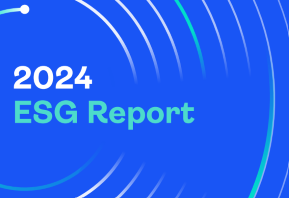Hear the latest market research on eSignature and iPaaS
In this 45-min session, you’ll hear new research insights from IDC on iPaaS and eSignature adoption trends. Learn how iPaaS solutions unlock new levels of efficiency and flexibility in eSignature workflows.
Watch the preview
You’ll gain crucial insights including:
- Research insights from IDC on iPaaS and eSignature adoption trends
- How iPaaS enables fast integration between eSignature and core business apps
- Strategies to diversify signing workflows across departments and use cases
- Ways to reduce manual work and increase automation without a heavy IT lift
Watch the webinar
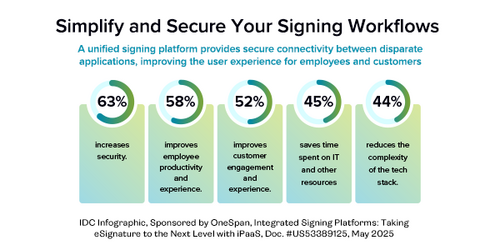
Why it matters
With the rise of low-code/no-code platforms and AI, IT leaders are rethinking how to deploy and scale critical technologies across the enterprise.
When paired with a secure, enterprise-grade eSignature solution, iPaaS delivers seamless connectivity across business systems — helping teams accelerate agreements and realize greater ROI from their tech investments.
Transcript: Taking eSignature to the Next Level with iPaaS
To do introductions, I'm Andrew Gens, Senior Analyst, AI Software, and my primary coverage is computer vision AI, multimodal AI, and intelligent document processing. Little bit different from what we're covering here today, but something that I have also covered since I started here at IDC is integration. And despite my primary focus is in these other AI domains, I continue to support the integration and connectivity automation research here at IDC. We're also joined by Holly Muscolino, Group Vice President, who covers content services, document applications, and the future of work.
So going into this project, we really wanted to identify problems that were experienced by many users of eSignature and common problems implementing a really solid workflow from end to end. These problems emerged through conversations with customers in prior IDC research, as well as our survey efforts as part of this specific project. These problems involve:
The connectivity between siloed applications and data sources and how they can connect to critical signing workflows
The ability to enable higher degrees of automation in signing workflows by unifying data streams with high degrees of visibility
Providing LOB workers with tools like low-code and no-code to be able to execute a broader array of tasks without IT intervention
To start us off, really what is iPaaS?
IDC has a definition of iPaaS that classifies it as software and services typically consisting of development and testing capabilities, integration management, and runtime capabilities, including legacy enterprise service buses that support the family of web service standards and API lifecycle management.
And so below here, we've got a little collection of companies broken out just to give a representative sample of who plays in this domain. Of course, we've got some of the classic hyperscalers, but we also have some more niche players that specifically target the iPaaS market. iPaaS is interesting because unlike other integration technologies or solution styles, it can encompass multiple different technologies with API management capabilities and as well as some B2B capabilities as well in some instances.
So what role does iPaaS play?
iPaaS serves as the circulatory system of the enterprise in many ways. If you can't have the data where you need it when you need it, then insights cannot be gleaned and actions cannot be taken. And so the platform connects applications to ensure data sharing across systems and silos. We all know how easy it is for an organization or a department within a company to get siloed off. It happens all the time and these silos can serve as roadblocks to productivity. And so getting all of these disparate departments connected really helps to accelerate efficiency and productivity across the enterprise.
iPaaS also consolidates integration automation tool sets, allowing for an ease of automation for processes through the iPaaS platform itself. These easier-to-use tools that again, involve low-code, no-code capabilities allow for more optimal use of skilled resources and really the up-leveling of line of business users.
To start us off with the high level, as D’Marco mentioned, 63.7% of respondents to IDC's Worldwide AI-Enhanced Connectivity Automation Survey reported having adopted an iPaaS solution. So that’s pretty high adoption and we see that trend only continuing with higher adoption over time.
So why consider iPaaS for eSign workflows?
eSignature is everywhere in a business. As we can see here in the chart, there are documents that need signing across the enterprise, legal, finance, B2B sales, etc. All of these different groups within a business have different signing needs and the ability to centralize all of those needs in one signing solution is a strong capability to accelerate the whole process of the end-to-end digitized workflow.
Again though, there are many silos that can exist in an organization. And so any one of these groups could have its own tool that they use or a collection of tools being shared by some of these. And so it's not always clear what the central signing solution is, if there even is one.
What does the ecosystem connectivity for eSignature entail?
So very hand-in-hand with the last slide, eSignature solutions are deeply, deeply connected in their workflows to different enterprise systems, such as enterprise resource planning, supply chain management, customer resource management systems. And taking content from all of these, they feed it in many different ways into the central signing solution.
And having one consistent pipeline to facilitate that transfer allows for organizations to standardize. It allows them to achieve consistent value and consistent time-to-value.
So where are we today? Some 97% of organizations are using two or more eSignature tools. We can see that the majority are using primarily two tools, two vendors, but there are a decent amount using three or even four. What we can see is that there are a marginal amount using only one. And this goes back to what we were talking about before. There are many reasons for organizations to end up with multiple tools, including departmental disconnects, but also just separate needs.
There could genuinely be different needs between organizations leading to different tool selection. And that can lead to this kind of spreading out of solutions. And you can imagine for those vendors or organizations with four or more solutions in their portfolio, it ultimately can become a bit hard to manage on a high level, on an enterprise-wide level.
So we see that all these different organizations have eSignature solutions, and there's a high degree of adoption there, and even multiple solutions. So it could be a surprise for some people to see that despite that, over 50% of [workflows] still use at least a mix of paper and digital for their signing workflows.
And you can see the breakup here. So there is a large percentage that do a mix of paper and digital, but there also are a large percentage, 27%, that rely solely on paper to this day. So how do we reconcile that with the high levels of adoption for eSignature solutions? There are many different reasons why this could be the case.
We have departmental splits with some departments preferring some stuff and other departments preferring another.
We also have more legacy practices where there's an established system that doesn't rely on an eSignature tool, and there's some resistance to change in that department.
Or there could be just not awareness that eSignature is even legal to use in some older organizations.
So there are a lot of barriers in that path. Looking further at these barriers, we can see on the left here that when polled, only one third of respondents reported eSignature solutions worked well for them.
eSignature solutions are in many ways very powerful, but there are some things that customers do not see working as well as they would like. And so, what other barriers are there to organizations going fully digital? We see that there are questions of trust, data sovereignty and protection requirements, difficulty to authenticate signers. And then we've got more classical issues of implementation costs. That can be very understandable. We all know that it can be difficult to acquire budget for some of these tools, especially when there is existing infrastructure in place and existing tools in place, and that can require a whole process.
But the fourth one is quite interesting here, difficult to deploy and or integrate with other applications. If organizations can't connect with what they need to connect an end-to-end digitized signing workflow, then there really isn't as much of a purpose to going digital because the eSignature solution can only get you so far if you don't have the apps and data sources connected with it. And so the top-line takeaway from this is, there's security, there's cost, and then there's connectivity. And I think that those three are the main drivers behind this lack of digitization in that way.
Looking at the flip side, what are the drivers for consolidating eSignature vendors?
This is something that is, again, very security focused. We see that a lot of organizations choose security as their most influential aspect, but looking down, we have improved employee or productivity experience.
And we can look clearly and say that this is very in line with the line of business enablement that we're seeing from iPaaS solutions with low-code and no-code capabilities.
Improving customer engagement and experience. You can also imagine by including an iPaaS capability within an eSignature solutions that customers may achieve a higher degree of satisfaction. If a signing workflow does not have data coming from the appropriate sources or is not connected to the appropriate sources, that could lead to inaccurate information being filtered down to the customer. It could lead to longer lag times with these signing workflows as the appropriate data and information is attained by the one facilitating that process. And you save time on IT and other resources.
Again, with that line of business enablement or up-leveling with low-code and no-code, the IT is not removed from the equation, of course, because there's still oversight necessary, but some of those responsibilities that would have been taken on by IT can then be moved over to the line of business user, who again, they're the one with some of the most practical experience in these workflows. They're the subject matter experts in many instances. So you get the double benefit of enabling those line of business users to do more while also enabling the IT employees to focus on more high-value tasks.
What does an end-to-end digitized signing workflow even look like?
Starting from the left here, we see that a lot of it starts with gathering data. This is really the kickoff point for almost all digitized end-to-end signing workflows, because before you can generate, authenticate, sign, and protect, and then store and archive, you first need to have the data that you're talking about in the first place.
And so this would be via integration with enterprise apps or other eForm solutions. And really, it's the kickoff of the whole pipeline.
That being said, there is kind of a level at which we represent gathered data and the kind of iPaaS stage on the left here, but in a certain sense, it really sits on top as well, because you can think along this digitized signing workflow there are points where you may want to go back and authenticate your data. You may want to go back and bring in some more data. There may be something that was not relevant when the project began, but becomes relevant in a later iteration. And so you could see the gathered data stage really as a check-in, not just a first step, but a check-in step that's occurring at each level across this process, especially if it's utilizing some levels of automation.
When we are looking to see what people want from iPaaS and how they're approaching it in their current stage, we see that the most common way is to use only one combined API management and integration platform. So that is kind of what iPaaS represents.
This is a partial transcript. For more insights, watch the full webinar.
